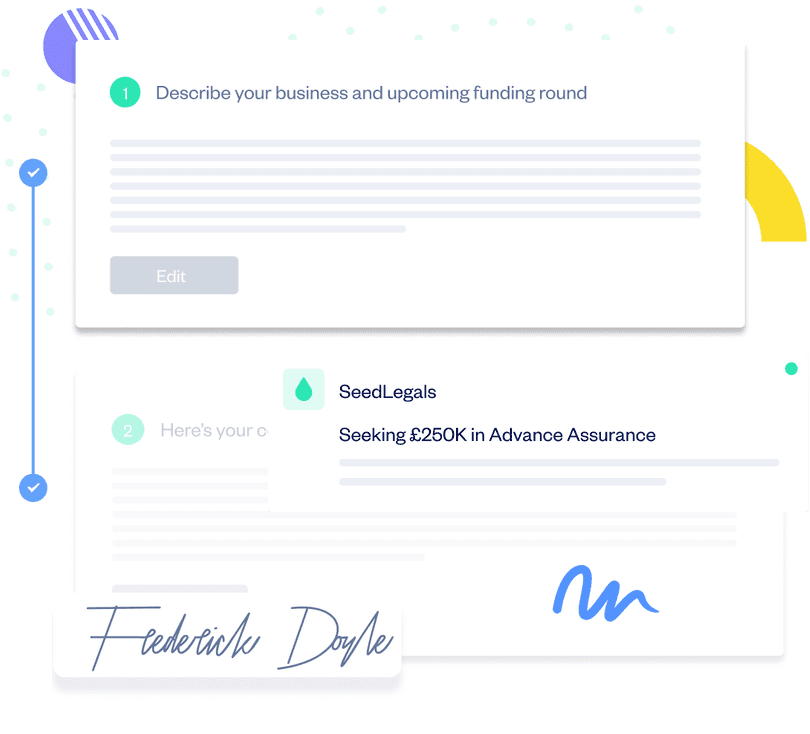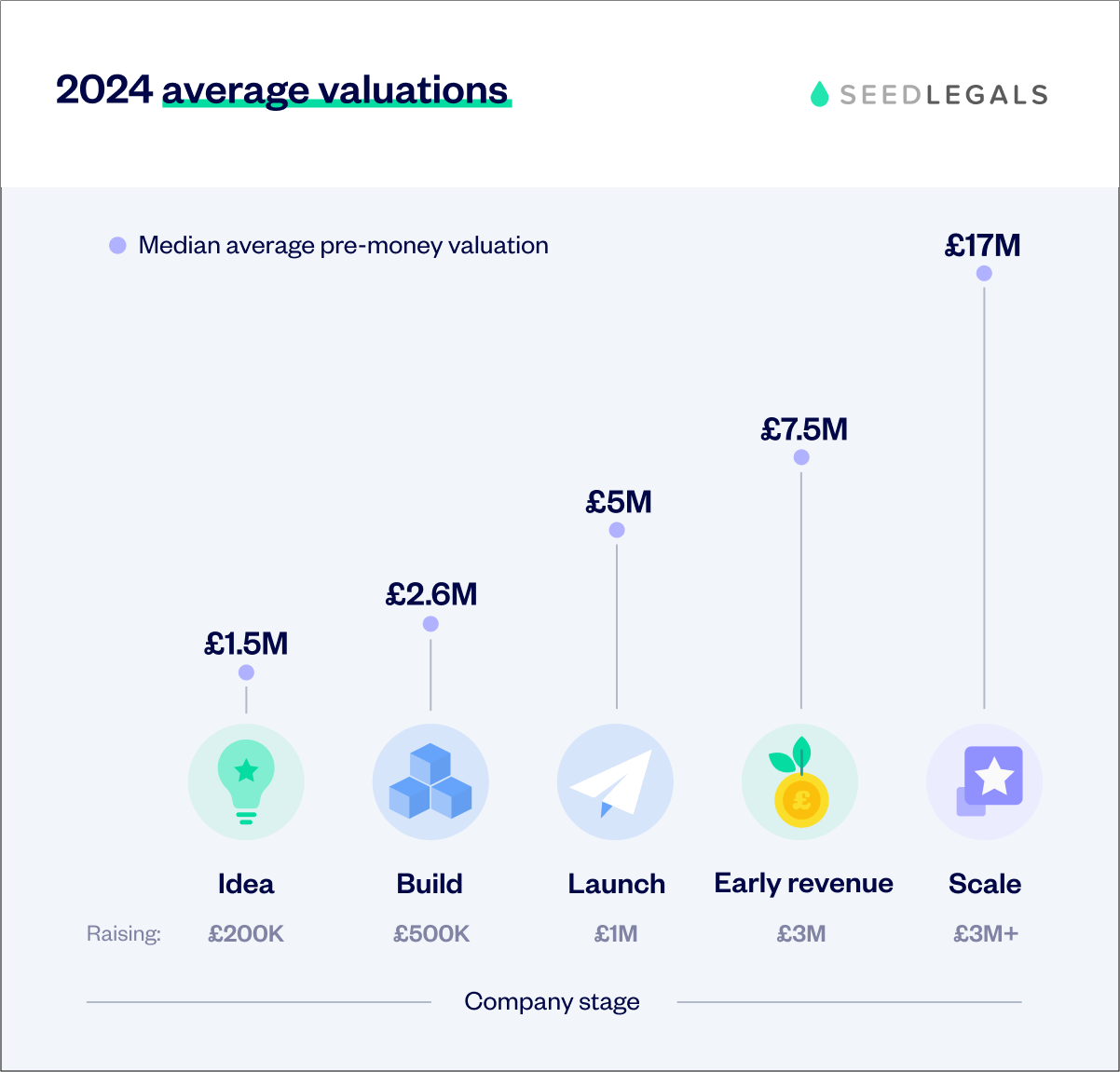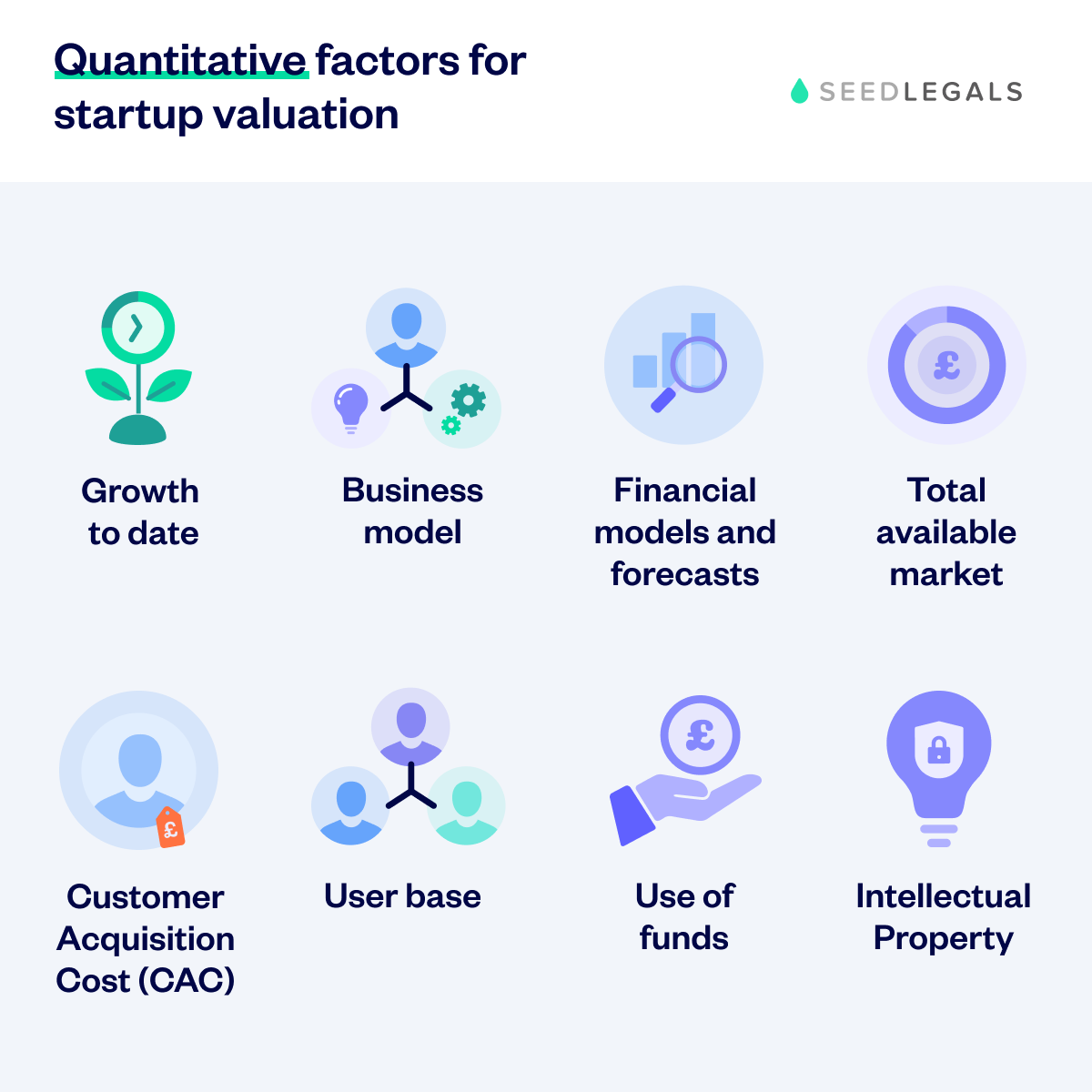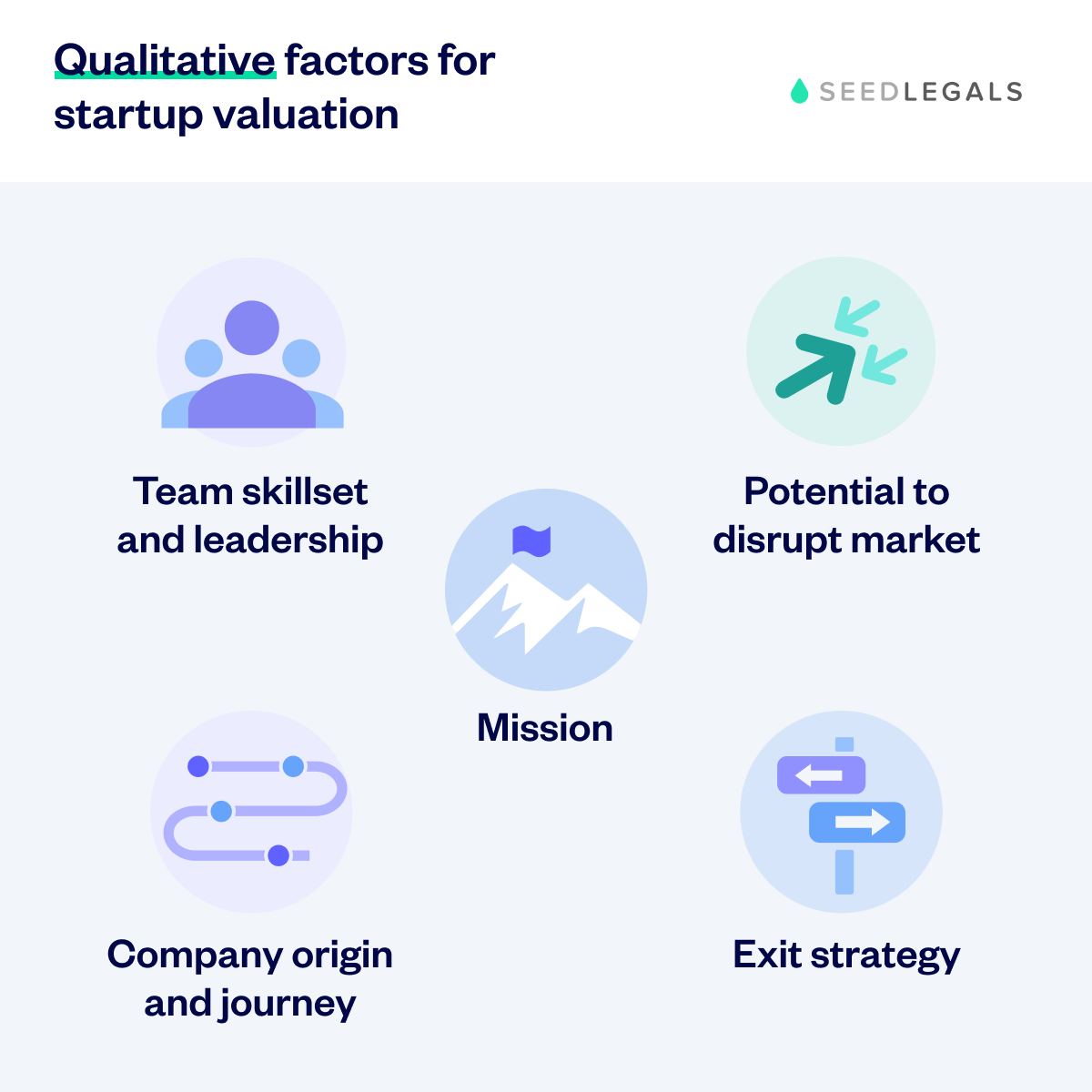How to find startup funding
One of the most common questions founders ask is ‘How do I get funding?’ Read our comprehensive guide to finding funding...
For any company, it’s never easy to land on a valuation figure. And when your company is early stage – and especially when you’re pre-revenue – it’s especially tricky to come up with a number to put in front of prospective investors during funding round negotiations.
You want to be ambitious, not outlandish. Go too high and you’ll get the brush off. Go too low, and you’ll undersell yourself and give away more equity for the investment amount than you needed to.
This balance is hard enough to strike when you have solid revenue numbers to build your valuation on. When you’re working from projected sales targets and market research, it can seem like you’re expected to pull a number out of thin air.
That’s why we’ve put together this guide on how to approach pre-revenue valuation and what solid numbers and facts you can use in your discussions with investors when you can’t point to revenue performance.
Many investors only invest in companies pre-approved for SEIS/EIS. We make it easy.
Apply for SEIS/EISPre-revenue is a broad term – your company could be anywhere from having just sketched out an idea all the way to right about to put your product in front of customers. Technically, ‘pre-revenue’ just means you haven’t actually made any money from your product or service yet.
But practically, if you’re at the point where you need to propose a company valuation, you’ve already tapped your own resources and your friends and family. The next step is to make a more formal investment arrangement with an angel investor or a VC who invests in early-stage companies.
In this context, being pre-revenue means your product research and development is well underway. You might have a prototype you’re beta testing or an MVP (minimum viable product) and early users. It’s likely you’re raising a funding round for the cash to get your product or service to a place where you can start to charge for it.
The valuation is a measure of how much a company is worth, and it’s an important figure to know for both the founder and the investor.
The investor puts in money in exchange for a proportional amount of equity. For an investor, a lower valuation is more cost-effective; they can own more equity for a lower buy-in. Conversely, as a founder you want to be able to sell less equity at a higher value.
All the same, you don’t want an overly inflated valuation of your startup. While a higher valuation means more seed capital without giving away more equity, if you raise expectations with a huge number and don’t deliver, you might have to drop your valuation at your next round. This is a problem for a number of reasons, not least because it gives a terrible impression to prospective investors and dilutes your current investors more than they had bargained for.
To help guide your thinking, here’s our breakdown of typical valuation ranges based on a startup’s stage of growth.
| Company stage | Raise amount | Median pre-money valuation |
| Idea | £0 – £200k | £1.5M |
| Build | £200 – £500k | £2.6M |
| Launch | £500k – £1M | £5M |
| Early revenue | £1M – £3M | £7.5M |
| Scale | £3M+ | £17M |
Pre-revenue, you can think of your valuation in terms of how much you want to raise and how much equity you want to sell. You can use this guideline and the broad categories above to come to a valuation figure.
Anthony RoseThe general rule of thumb for angel/seed stage rounds is that founders should sell between 10% and 20% of the equity in the company. These parameters weren’t plucked out of thin air, they’re based on what an early equity investor is looking for in terms of return.
Investors are placing bets on startups with the clear knowledge that most of their investments will give zero return. They are exposed to a high-risk/high potential scenario, hence will likely want a decent slice of equity to get a meaningful return if things go well, and also to have a meaningful level of influence and control of key company decisions if they don’t.
Co-Founder and CEO,
For more of Anthony’s insights into how to balance equity and investment, head over to How to value your company and how much equity to give away
We’ll now focus on how you can justify your valuation amount to investors when your company is still pre-revenue.
Early-stage founders are often more focused on the mission than the metrics. Many investors on the other hand will expect strong proof of potential before they part with any cash.
Investors will want to see the proposed valuation justified by both quantitative and qualitative data. Quantitative data is the objective fundamentals of your company. It includes financial modelling and forecasts, market size and user growth. Qualitative data is more subjective – for example, the strength and expertise of your team and your overall vision.
Qualitative data tends to look ahead with a big-picture bias, while quantitative data focuses on what can be measured now.
From this point on, we’re talking pre-revenue metrics: the numbers you can use to prove you have a viable company that’s ready to scale. You won’t need or have access to all of them, but here are some suggestions of how you can show product market fit, traction and growth potential.
Pre-revenue, it’s less about the actual numbers and more about demonstrating how well you understand the market. You can use your research to tell a compelling story about your potential for success. For this to work, you need to get your investor’s buy-in on your idea, industry and team.
Any inflated numbers or unsubstantiated stats will be deeply counter-productive. The more insight you have, the more a potential investor is likely to trust that you can take their money, make a success of your company and deliver them a worthy ROI. Keep everything in your deck firmly grounded in reality, even as you show ambition in where you’re headed.
The data in your pitch deck should reassure investors that you know what you’re doing and that you have a strategic, actionable plan for their money. You’ll be more impressive to investors if you can talk critically and clear-eyed about your strategic strengths and weaknesses. Most investors will conduct a SWOT analysis on your business (strengths, weaknesses, opportunities and threats), so make sure you’re prepared to talk through your own analysis.
There are three magic words you want to hit: product market fit. You need to convince your investors that there are customers or users out there with money to spend and it’s you they’ll want to give it to.
Here are some ways you can quantify how much market appetite there is:
Total Addressable/Available Market (TAM)
This calculation is a blunt instrument, but you can use it as a broad measure to emphasise the total demand and opportunity for growth within your market.
To get to a number, estimate how much total revenue you could raise if you successfully sold to anyone with an interest without any competition at all. For this to be convincing, drill down into who your target market is and what problem they want to solve. You’re aiming to justify how large the general market opportunity is.
Projected market share capture
Here’s where it gets more realistic, even though you’re still working with imagined numbers. Estimate the percentage of the available market you could reasonably capture and when by. Be prepared to defend your estimation.
Projected growth of market
Investors are looking for a company that will do better than just survive in a market – you’ll need to show how you are positioned to ride a wave within it. Think the market will see a game-changing development in the near future? Explain how your startup is positioned to disrupt the space.
Clear value proposition
Maybe you’ll be five times faster, cheaper or more accurate, and that’s why you’ll nail product market fit.
Don’t hide that you own proprietary advantages or technology via IP rights. Investors will want to know why a competitor can’t just swoop in and do what you do. Be clear about how you have the advantage over competitors.
Benchmark competitors’ valuations
While you don’t want to suggest it’s a saturated market, some founders find it useful to use valuations of other companies in their industry to indicate demand.
Jonny SeamanAn in-depth understanding of the true market opportunity is one of the things that will help you stand out against other founders. It’s very easy to say: ‘If we capture just 1% of the global energy/dating/fintech market, we’ll generate £XX billion a year.’
Instead, you want to demonstrate exactly how you’re going to capture 5% of a small niche within the industry. Then you explain how you’ll expand into X & Y adjacent markets while continuing to grow your market share in the first industry, leading to an estimated £11.43M per year in year 3 and £64.89M by year 5.
Fundraising Expert,
So far the numbers we’ve been talking about have been hypothetical. Now it’s time to show how you’ve already had early success in making the most of that market opportunity.
Momentum
Calculate this as progress by time or progress by the money you’ve already raised. Either way, you want to demonstrate that you grow fast and that investors should join at this early-stage before your company takes off. Progress here won’t be defined by revenue, but you could use the number of free users or another measure of growth – see below for more ideas.
Established user base
How many people are already using your product, even if they’re not paying for it yet? It’s not just about the numbers here. If you have early users, make sure to get as much insight as possible into how they use your product.
Interested user base
Have you got sign-ups for a waiting list for your product or even letters of intent? Use metrics like these to suggest how successful you are at generating interest.
Website traffic
Traffic and other marketing metrics can act as proof that there’s demand for your product and you know how to reach it. Ideally, you’d be able to point to a low CAC (customer acquisition cost). You want to show you can grow your user base at a relatively low cost.
MVP stickiness
Don’t just focus on how you can get new users in the door – demonstrate how often they come back. It’s more cost-efficient to keep an existing customer than to win a new one.
Engagement data
This is another exercise in putting numbers to the demand in the market you’ve identified. You could track the number of referrals, potential leads and conversations you’ve had with your prospective audience.
In the end, investors are most interested in assessing your ability to make money. However, when presenting your financial projections, it’s important to find the balance between being ambitious and realistic.
Expected recurring revenues and lifetime value
Consider your revenue strategy and if there’s something you could do to get more value out of customers after you’ve won them. For example, a subscription model guarantees recurring monthly revenue for less effort than continuous one-off purchases.
Projected profit and loss
Investors will want to see ambitious growth to get a worthwhile return on their investment. Loss includes overheads like cost of goods sold or cost of sales, general and admin expenses, research and development costs, the marketing budget, and any interest payable on loans.
In many cases, your investor might be more interested in vetting your team rather than the product. After all, at the pre-revenue point there’s plenty of scope to change the product as you conduct research and talk to your customer base. This is why investors are primarily investing in the team’s ability at this stage. You’ll want to prove to them that they’re backing a winner.
Explain why you and your team are the right company to execute this idea. Can you point to a promising track record, whether that’s in your particular industry or through previous involvement with a successful company? You might not have hard numbers, but you can use facts like awards and career accomplishments to showcase your team’s domain expertise.
Leave your investors with a strong impression that you’re the right team to build your product and execute a high-growth strategy.
There’s no one right way to decide your company’s valuation, especially when you don’t yet have any sales data. When it comes to pitching your idea and validating your valuation, different investors will be interested in different signs of growth. As an early-stage founder, your focus should be on substantiating that you know how to achieve product market fit to build confidence in your investors.
Our 5-star team of experts have supported companies to raise a collective £1.5B+ so far. Want to know how we can help you fund and grow your business? Pick a slot below for a free thirty-minute conversation with one of our friendly specialists.













